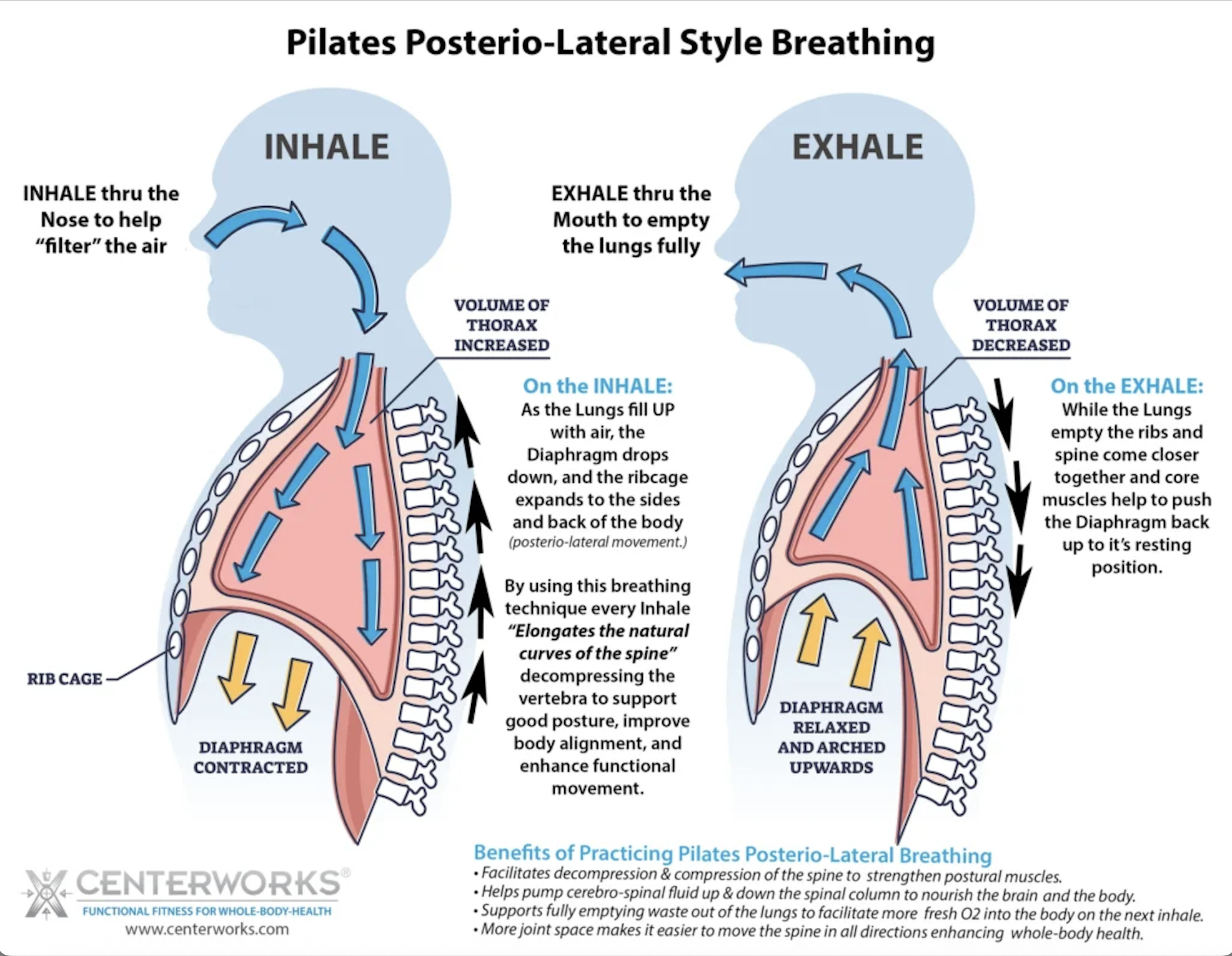Why Pilates Breathing Is Different — And Why It Matters
When you think of exercise, breathing might feel like an afterthought — something your body does automatically. But in Pilates, breathing is everything. It’s not just about getting air in and out; it’s a tool for stability, control, and connection.
If you’ve ever taken a Pilates class and wondered why the instructor keeps saying, “Inhale to prepare, exhale to move,”here’s why.
What Makes Pilates Breathing Unique?
Most forms of exercise focus on either deep belly breathing (like yoga) or high-intensity breath control (like HIIT). Pilates, however, uses a method called lateral (or posterior-lateral) breathing — expanding your ribs wide and back, rather than pushing the belly out.
Why Lateral Breathing?
Joseph Pilates designed it this way for a reason:
Spinal Support
By keeping the belly gently drawn in and breathing into the sides and back of the ribs, you maintain core stability. It’s like keeping a natural corset engaged while still getting oxygen.Deep Core Connection
The diaphragm, pelvic floor, and transversus abdominis work together. Every exhale activates these deep muscles, strengthening your powerhouse with each breath.Better Movement Control
In Pilates, you coordinate breath with movement — inhale to prepare, exhale to execute. This creates fluid, controlled transitions instead of jerky or momentum-driven motions.Improved Posture and Mobility
Expanding the ribs laterally improves thoracic mobility, which helps open the chest, lengthen the spine, and relieve stiffness from sitting or poor posture.
How to Practice Pilates Breathing
You don’t need to be on a Reformer to start. Try this simple exercise:
Find Neutral Position
Lie on your back with knees bent, feet hip-width apart. Place your hands on the sides of your ribcage.Inhale Through the Nose
Feel your ribs expand sideways and into the mat. Keep your belly gently drawn in, not puffing upward.Exhale Through the Mouth
Purse your lips slightly, like blowing out through a straw. Feel your ribs knit inward and down as your abdominal wall gently draws in.Add Gentle Core Engagement
On each exhale, imagine zipping up a corset around your waist — your pelvic floor lifting, and your lower abs drawing inward.
Practice 5–8 cycles, then add it to movements like The Hundred, Single Leg Stretch, or even just sitting at your desk.
Why Breathing Changes Everything in Pilates
When I started Pilates, I used to hold my breath through hard exercises — like many beginners do. But once I learned to move with my breath, everything felt lighter and more connected.
Breathing isn’t just oxygen; it’s your built-in stabilizer, rhythm, and energy source. Pilates breathing trains you to move smarter, not harder — which is why people often describe feeling longer, stronger, and calmer after class.
Final Thought
Pilates breathing isn’t just “inhale/exhale”—it’s a smart technique that supports your spine, activates your internal powerhouse, and brings intention to every movement. Next time you roll out your mat—or simply stand up—breathe wide, stay grounded, and move from the inside out. Ready to feel it in your next Pilates session?
